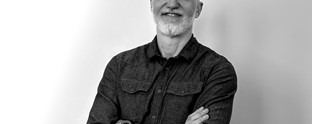Branding in tech – more vital than ever before

Alex Blyth, managing partner at Red Setter, talks about his experience at this year’s Web Summit in Lisbon, and the importance of pioneering brand designers attending the annual event.
At first glance Web Summit doesn’t sound like an event for brand designers. To walk the vast halls of Lisbon’s Altice Arena with 70,000 people from 153 countries talking tech, some pitching their tech ideas, others looking to make investments, it does feel far removed from the design conferences we’re used to. But I was there in Lisbon this November to see a handful of pioneering brand designers, and I believe that next year there should be many more. Here’s why.
First and foremost, the tech industry gets the importance of brand. The success of the tech elders – the Apples, Amazons, Microsofts, Googles and Facebooks – was built as much on brand as it was on tech. Those who followed - Uber, Airbnb, Spotify and so on – all followed the same playbook, and today’s would-be unicorns know it too. Brand matters to them, and that’s why you’ll find the likes of Wolff Olins, Collins, and How&How at Web Summit.
It’s vital they are there, making their case, as at this year’s Summit, more than ever before, there were low-cost, low-effort “branding” options to tempt tech firms.
Look at Yellow. Founded by brothers Patrick & Eric Dier (yes that one, the Tottenham Hotspur and England footballer) and due to launch next year, it promises comprehensive branding for a low monthly subscription. In all of their ventures so far, the brothers have been frustrated by the time and money it’s taken to create websites, pitch decks, and so on. With Yellow they aim to solve the problem. Patrick claimed: “You’ll be able to access the best designers, the best developers, and instead of it taking you months it will take you minutes.”
Tech firms also have options when it comes to channels. On another stage, three podcast hosts urged founders to start a podcast. Across the hall, satirist Jolyon Rubenstein showed examples of his brilliant work for charities, and offered his services to brands. (Except Shell. He was appalled the company had a stage at Web Summit and urged his audience to give them the middle finger. So, it’s safe to say he won’t be working for them.)
But the point is that these are all enticing options. Why spend a fair chunk of your scale-up funding, as well as hours of your time, investing in brand design when any of these options will be far less cost and hassle?
Of course, it seems ridiculous to those of us who work in the brand design sector. We know that the truly successful firms will be those that invest in the transformative power of brand. But to a tech founder or venture capitalist who comes from a very different world, and has a hundred demands competing for their time, attention and budget, the argument isn’t so clear.
Which is why brand design leaders need to be there to make it.
Brian Collins was there, taking a rapt audience on a breathtaking tour from him as a boy falling in love with the transformative idea of space travel, all the way through to him creating Hershey’s Chocolate World on Times Square (to celebrate he threw chocolate into the crowd), creating the Chobani brand, and transforming Figma.
There was Liza Enebeis from Studio Dumbar, entertaining us with the Dutch firm’s inventive motion designs for Northsea Jazz Festival, the D&AD Festival and the Design in Motion festival.
On the vast main stage Sairah Ashman, Global CEO at Wolff Olins told a crowd of thousands that you could never write a rule for generative AI that would replicate the serendipitous collisions that happen in creative teams, and that generative AI is unlikely to become a taste maker.
She’s right. The CEOs and VCs who saw Brian Collins and Liza Enebeis would have come away believing that too. But more branding experts need to be there next year to make this case. We need to shed the comfort blankets our design conferences and the safety of talking to people like us. We need to get out to make our case to people who don’t get brand, but who, if it’s explained in the right way to them, will spend money on it.
One last point: when we do this, we need more tech case studies. Branding chocolate and yoghurt and music and design festivals is great, but this crowd needs to hear more stories of the transformative power of brand for tech firms. They’re out there. Bring them to Lisbon next year.












